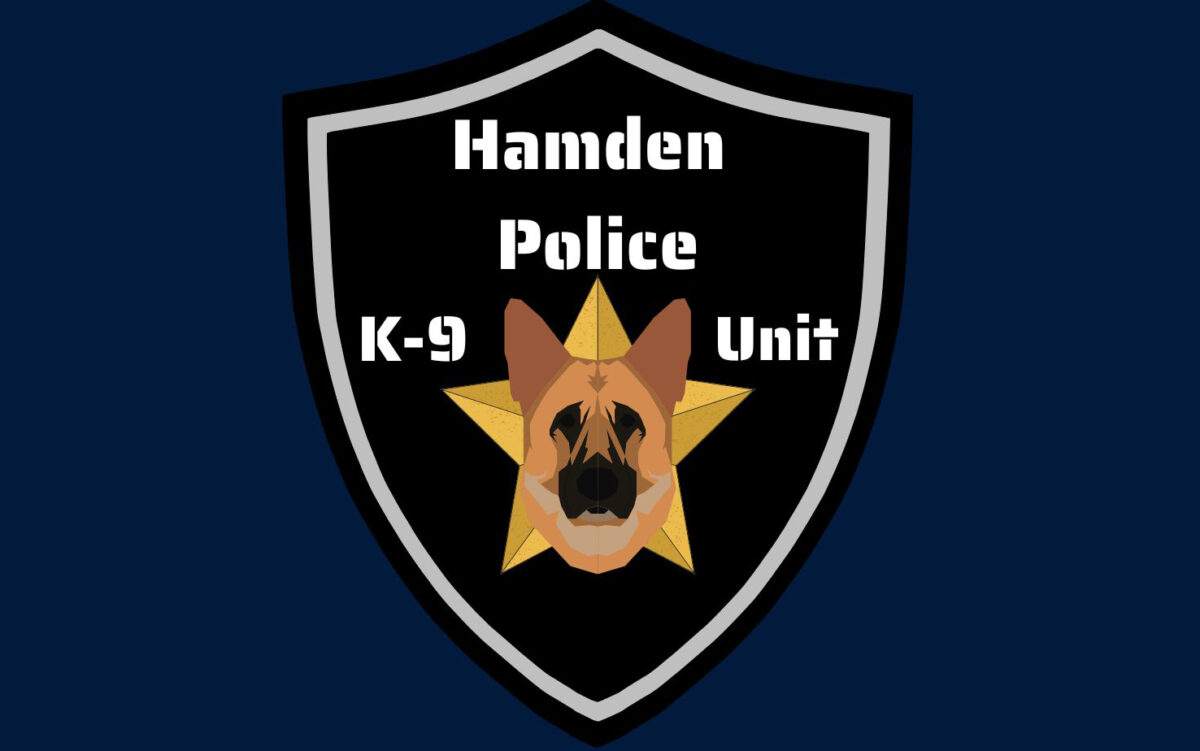As Lieutenant Jason Venditto opens the back door of his patrol car with “K-9” and “Knight” painted on the side, loud, excited barking is heard. He opens the door and a large, black German shepherd emerges – tail wagging and a tongue hanging out of its mouth.
Knight jumped out of the car and bolted. He sniffed the surrounding environment and jolted toward Lt. Venditto stood behind the leash. Knight excitedly accepted a newcomer’s attention while his tail furiously wagged. Venditto described him as a “big baby.”
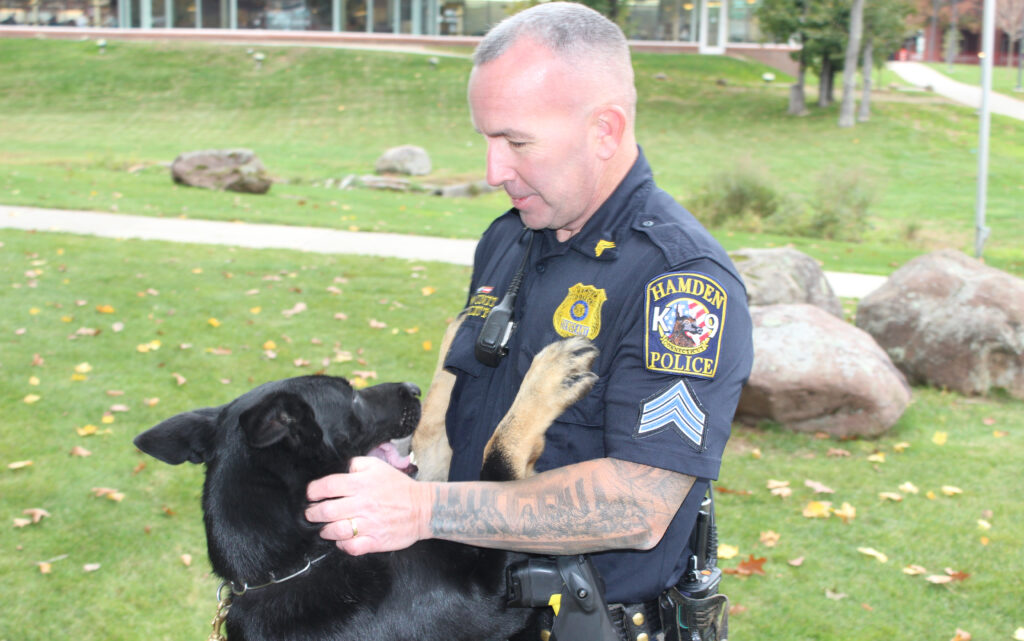
While the encounter showcased the side of Knight that makes him seem like any other family dog, when the time comes, he is a police officer.
In his duties, Knight strictly follows commands to assist officers in various situations including taking down suspects, tracking evidence, and scouting environments.
Venditto is the director of Hamden’s K-9 unit, but he started out as a Hamden police officer with curiosity about the dogs.
Upon the start of his police career, he began to put in the effort to someday get a K-9 dog himself. The image of working alongside “man’s best friend” while taking down “bad guys” he said, became the goal of his career.
“I thought it was the coolest thing when I was younger,” Venditto said.
Venditto, who grew up around German shepherds, asked the K-9 director at the time, Lieutenant Frank McDermott, what he could do to help the department and began to put in extra time to show how interested and dedicated he was.
His efforts paid off when he was selected to become a K-9 handler and wound up with his first K-9 officer, Titan.
Venditto and Titan proved themselves to be dynamic partners. Titan even became ‘famous’ around the state for his tracking abilities. Venditto recalled a time when Titan backtracked and found a crime scene where a victim escaped by using her scent. This is something that the dogs aren’t trained to do but Titan’s abilities led the police to the perpetrator leading to an arrest and sentencing.
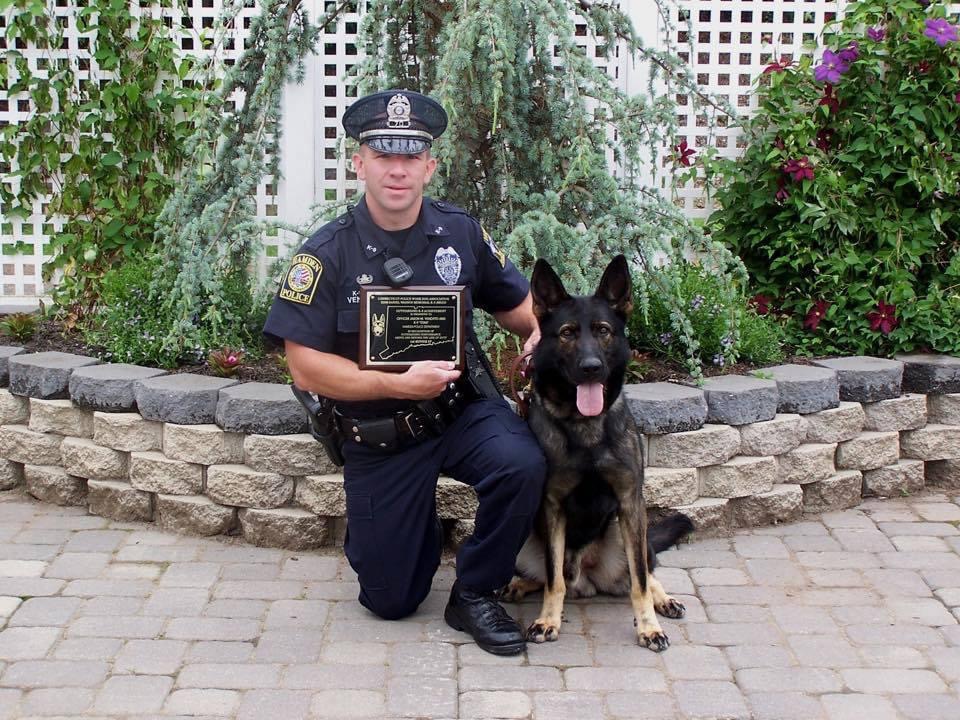
Titan retired after 10 years of service and lived at home with Venditto until he died about a year later in 2014.
Venditto and Titan’s career together was so impressive that the department gave him another K-9 dog named Viking who also had a successful career up until he unexpectedly died five years into service in 2018.
Knight, is Venditto’s third dog. He is five years old and undeniably proving himself as a police K-9.
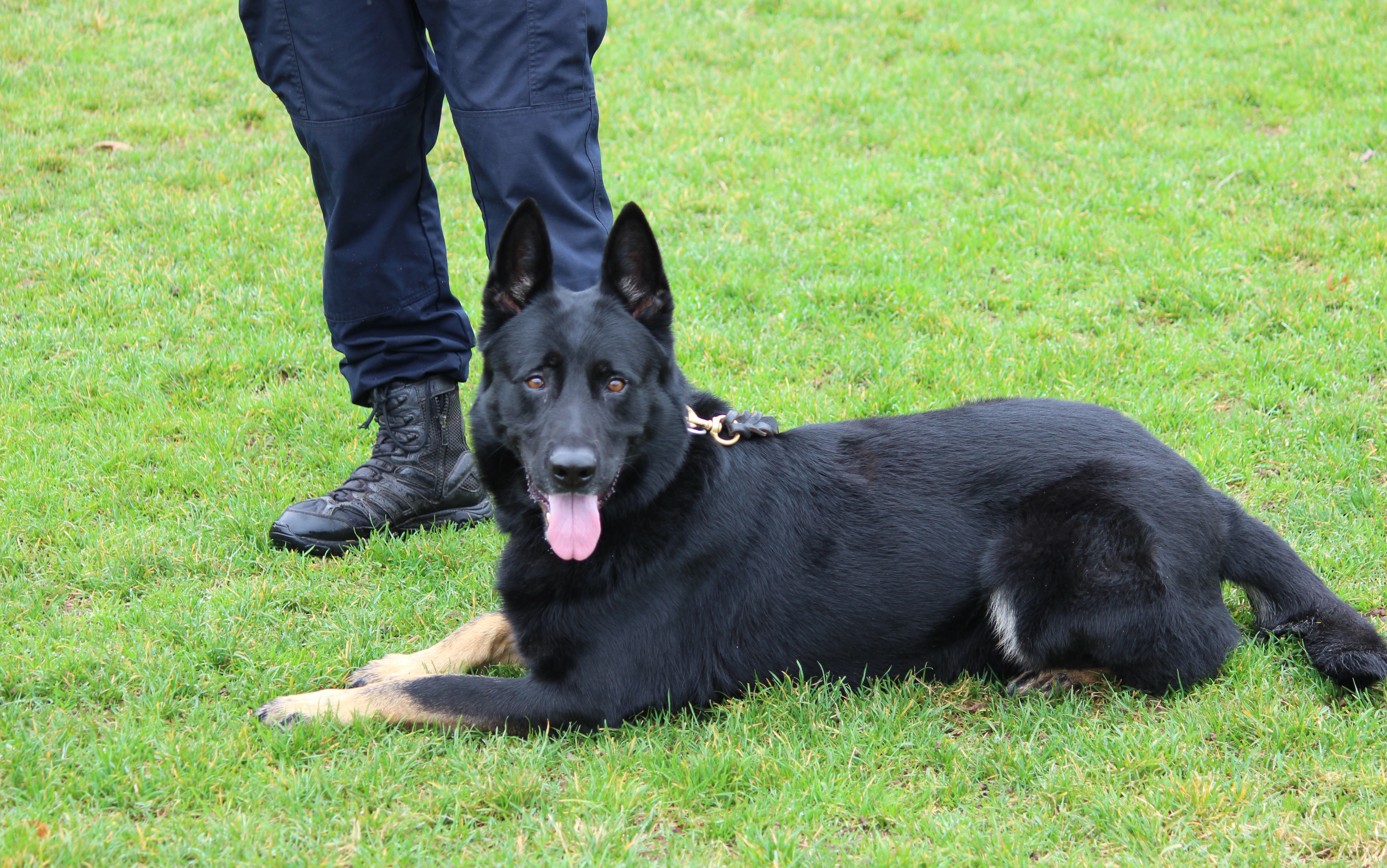
Knight is a dual-purpose patrol dog cross-trained in narcotics detection. The patrol function is tracking, building searches, evidence recovery, handler protection, and criminal apprehension.
Single-purpose dogs are trained for one specific job, whether it’s detection work or patrol dog. Dual-purpose dogs are used for more than one purpose, doing both detection and patrol work.
Venditto explained that police dogs can only be trained in one type of detection, narcotics or explosives, but not both.
All of Hamden PD’s dogs are obtained from the vendor Connecticut Canine Services in Bethany. This vendor picks dogs from eastern European countries like Slovakia, Poland, and Hungary and presents them as options to Hamden PD when it is in need of a dog.
Meredith Vallillo, owner of Connecticut Canine Services explained how they try to match the right dogs up with the right handlers and departments.
“If we have a handler that’s a little softer or easier going and is not so energetic, we try to match them with a dog that is,” said Vallillo. “And then if we have a guy that’s more strong and intimidating in his energy, then we try to match them with a dog that can handle that.”
The dogs Hamden PD is receiving are getting younger and younger as time goes on, Venditto said.
“We used to get them between about 18 to 24 months, but now you really go from like 12 to 18 months, 14 months, which is pretty young,” said Venditto.
Venditto said the reason that the dogs are getting younger is due to demand and that while younger dogs can’t be trained to do bite work until they’re older, they can be trained in detecting narcotics or bombs.
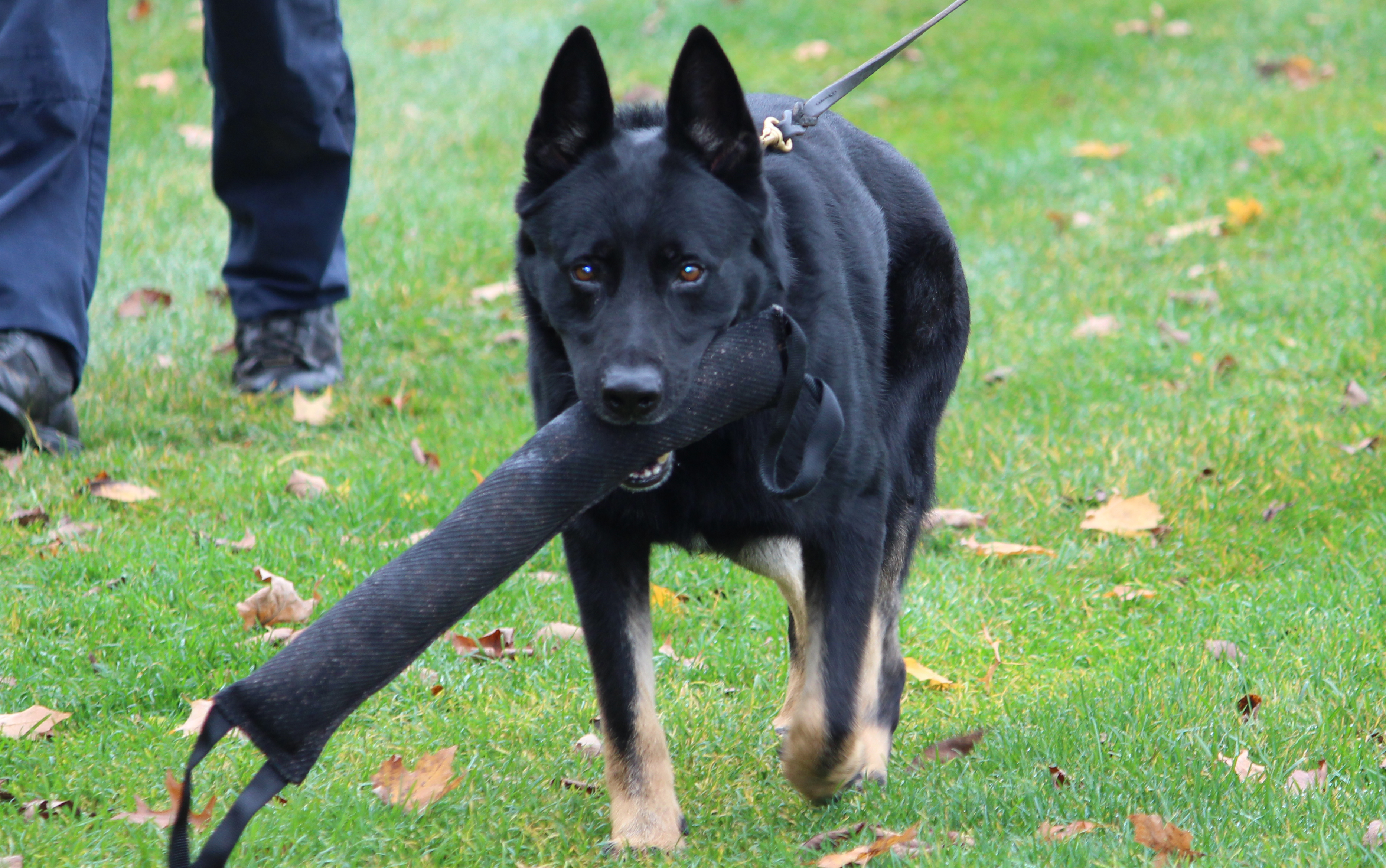
The cost of a dog can vary on how much training it has prior to be bought along with the quality of the dog, said Venditto.
“A green dog, which is a dog with no training is approximately $8,000,” said Venditto. “They can go up to approximately $12,000 with some training already put into them. Not cheap.”
Once the department finds a dog that it thinks could be a good fit, they are put through a series of tests to determine if they have the right drives to eventually become a police dog.
“A dog has so many different drives,” said Venditto. “A fight drive, a play drive, a hunt drive, different drives. And you use all those different drives in police work, so we test every one of those drives.”
The hunt test is where a ball is thrown in an area like a tall field of grass and a dog will be held momentarily and then released and expected to find the ball. This task is difficult for the dog because the ball isn’t easily visible. It tests the dog’s hunt drive and ability to not give up on their hunt until they find the ball.
The prey test is where a dog is teased with a decoy which is an officer wearing a bite sleeve and expected to chase them down and bite them. The goal is to test the dog’s prey drive and natural instinct to hunt down prey.
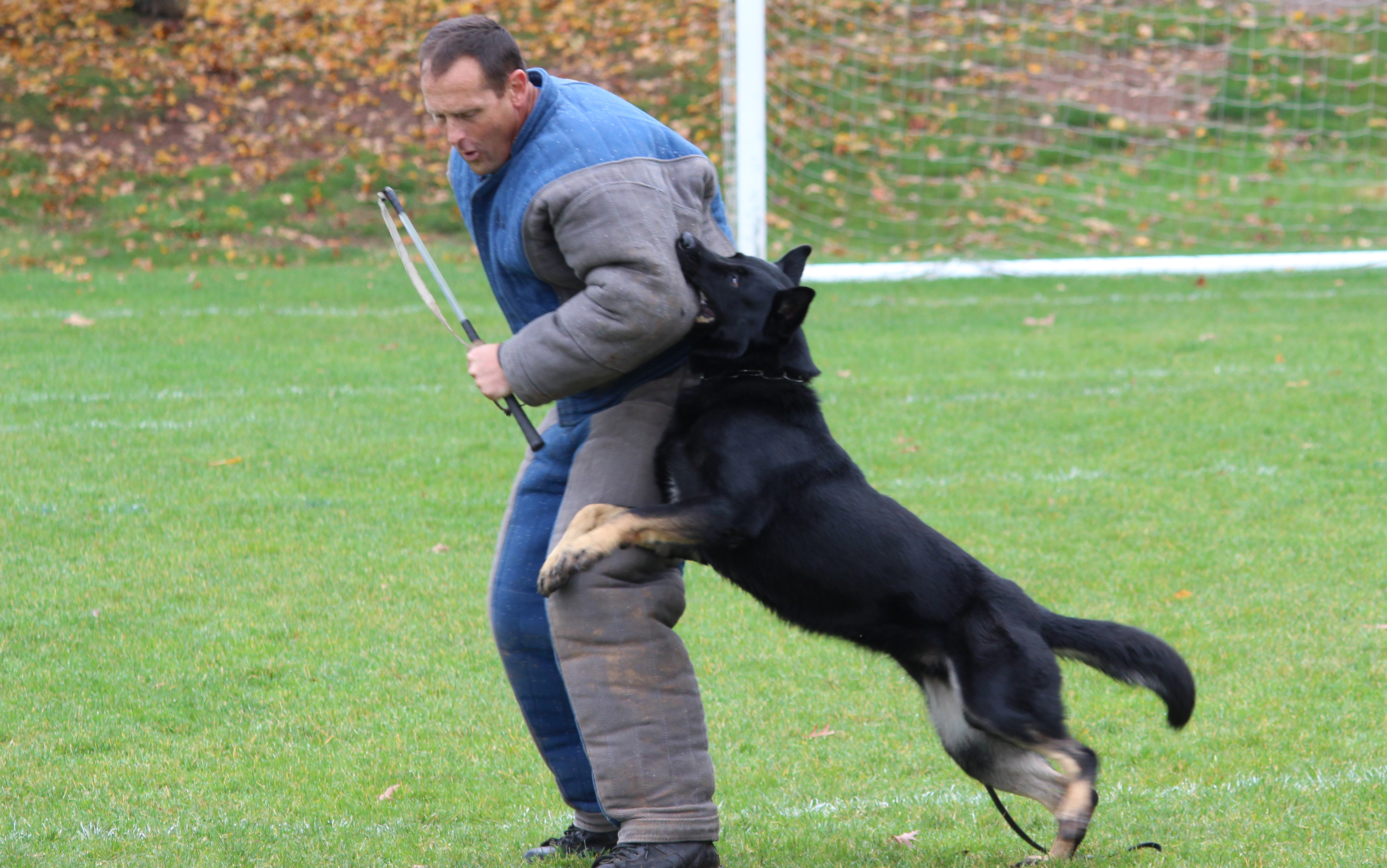
The fight test is where a decoy shows aggression towards a dog while getting bit. The goal is to make sure the dog has a fighting drive and doesn’t cower away or back down. Venditto explained that this drive often has to be built up with young dogs.
The slippery floor test is where a dog will be taken to a gymnasium-like floor that is shiny and slippery. If the dog refuses to walk or step onto these floors, Venditto won’t take them, he explained. This test is important because there are many instances when K9s will have to explore unknown terrain and all types of environments and they need to be comfortable doing so.
Once a dog passes all of these tests, they start its police training which takes about four months.
Venditto is a certified trainer with the Connecticut Police Work Dog Association and the National Police Canine Association, so he trains his dogs himself.
Most handlers send their dogs to a canine school, which usually has around six or seven officers and their new dogs getting taught and trained by a ‘master trainer,’ Venditto said.
Lieutenant Bill Scribner of New Milford, is a master trainer that Venditto used to take his dogs to and now relies on whenever he has a question. Scribner has over 35 years of K-9 experience and was a founding member of the Connecticut Police Work Dog Association, Inc.
Scribner says that the layout of the training sessions varies based on whether the dog is a single or dual-purpose dog.
“A single-purpose class could run somewhere between four to eight weeks long,” said Scribner. “A dual-purpose class could run anywhere between 10 to 26 weeks long depending upon the type of dog you get and whether or not it has any pre-training.”
Scribner explained that the costs range between $5,000 and $15,000 depending on the training package that the police department selects.
Hamden Police have two, dual-purpose dogs on staff.

For Scribner, the most rewarding part of the experience is the growth that the dogs and handlers go through.
“I like to see it evolve through the process when you start out with a brand new handler who has no experience, no knowledge of it on day one, and then a short ten weeks later, you get the chance to see the finished product,” said Scribner.
While being a K-9 handler is the best job to have, Venditto feels, he says that not everyone can take on the position or understands all the responsibilities that come with it.
“They could be the best cop in the world, but they are not going to make a good dog handler,” Venditto said. “It’s just different. Right? It’s a 24/7 commitment to these dogs. You know, you’re a dog handler. You know, not just your eight-hour shift. You’re taking care of that dog at home.”
The active dogs within the unit still undergo training twice a month to keep up with their skills and jobs.
One of these training sessions took place on Oct. 26 at Quinnipiac University. Venditto, Sergeant Bill May, and Sergeant Mike Nawrocki put dogs Knight and Blaze through a variety of tests.
Nawrocki acted as a decoy and wore a padded suit while the dog’s Knight and Blaze practiced bite work. While the suit takes away a big portion of the pain, Nawrocki is still left with dark bruises after training sessions.
“The dog will get you in a position where it feels more like a pinch, so you feel the pressure but not the teeth bite and not the punctures hopefully.”
Venditto explained how training sessions are switched up to put the dogs in different scenarios so that they don’t get used to a single experience.
“We change it up a lot. Sometimes we won’t even have the decoy in a bite suit, just regular clothes, but we’ll put the dog in a muzzle.”
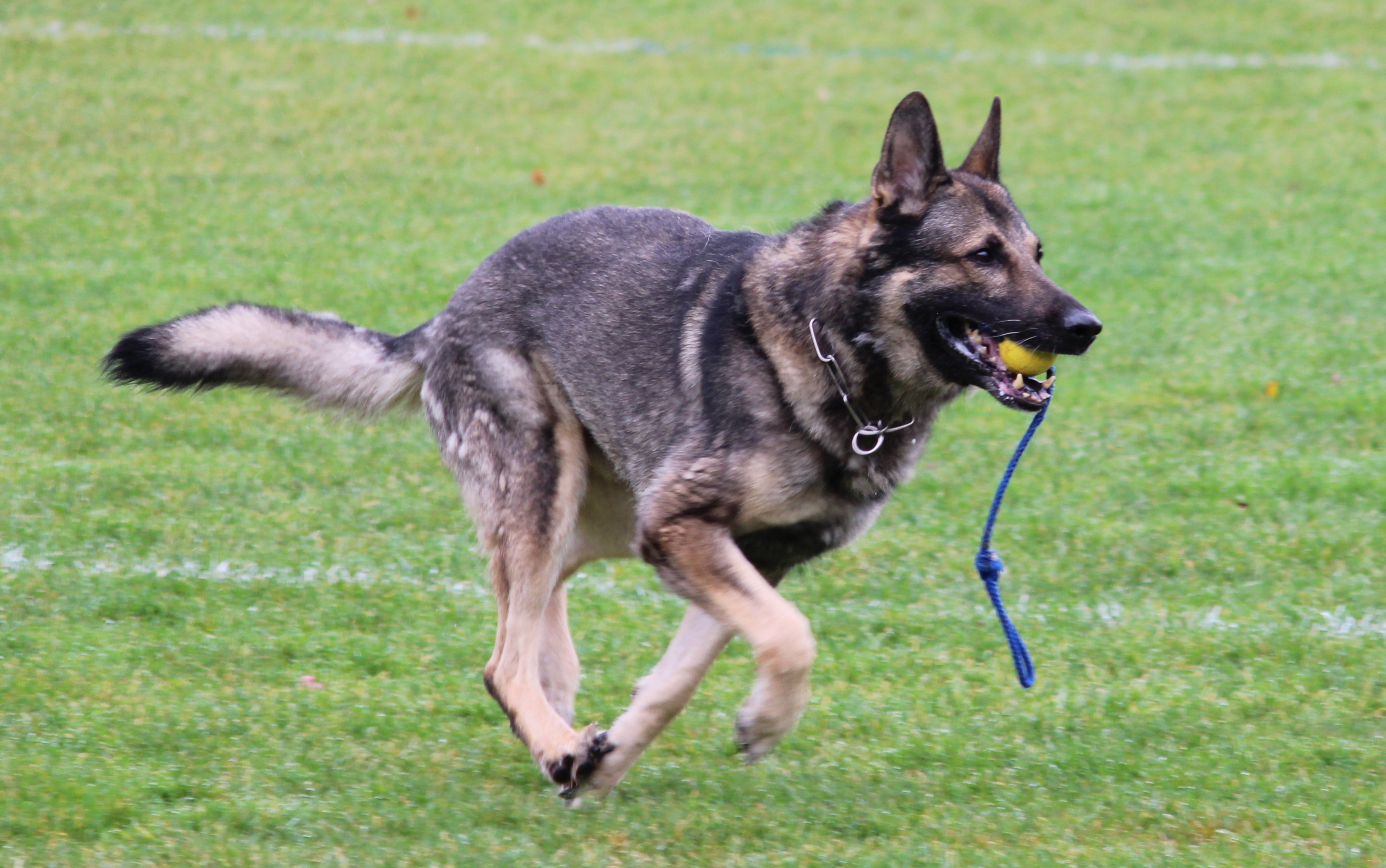
Police dogs have several skills and responsibilities while on the job but May explained how certain equipment lets the dog know the task at hand.
“Once the dog gets his harness on which is only used for tracking, the dog will now know ‘alright now it’s time to track, I have my harness on,’” said May. “Once (Venditto) lets the dog go here, the dog’s nose is immediately going to go down on the ground and he’s going to start hunting for the odor.”
While people may see the side of police dogs that is scary, Gabrielle Scirocco, or Gabe for short, the owner of Hot Diggity Dog Grooming Parlor in Hamden and president of Where the Love Is Animal Rescue, gets to see the lovable and sweet side of Knight.
“I’ve never seen him growl. He is amazing,” said Scirocco. “He’s just got a kind soul about him.”
Scirocco told HQNN that although Knight is different from any other police dog she’s encountered, she still proceeded with caution when asked by Venditto to groom police dogs.
“You take precautions. You start at the back always to see how they’re going to do. If you’re clipping their nails, shaving their pads or brushing them. I’ve been doing it so long, I can read their body language,” said Scirocco.
“He loves it,” said Venditto.
While the idea of Knight putting his life at risk makes Scirocco sad, she says, the jobs these dogs are performing are an incredible assistance to the police department and the officers they accompany. Nawrocki explained the complexity of the situation.
“They’ve been basically domesticated over hundreds and hundreds of years to be a companion for a human and you’re basically teaching them at that point to fight a man and then still be the companion, so you need a special balance,” said Nawrocki.
The careers these dogs have are heroic and impressive so like people, they are able to retire once it’s apparent that they can’t physically perform as they once could.
Venditto says it’s a judgment call on when to retire a dog.
“There’s no one thing that says it’s time to retire a dog,” said Venditto. “You just know when it’s time, you could see it in the dog’s eyes. You want to retire them and let them just be a house dog, a family dog.”
Venditto said that there are some police dogs that end up being overworked by their handlers and admitted to doing so himself with his first dog.
“I probably worked my first dog a little too long. I was a little selfish, but you learn and you don’t want the dog to get hurt,” said Venditto.
Once a dog retires from the force, they live out its days in its handler’s home as any other dog as Venditto said.
When asked what happens if a handler doesn’t want to keep their dog, Venditto said it’s not a worry.
“That’s never happened,” he said. “We would find somewhere for him to go but I’ve never seen that happen. These dogs are a part of you, no handler would ever give that dog up.”
As for age, Venditto said that most dogs retire between ages eight and 11 years old depending on their health and ability to serve.
Hamden’s K-9 unit currently has two working dogs handled by Venditto and May. The unit used to have more dogs, usually four, but now only has two mostly due to the high costs.
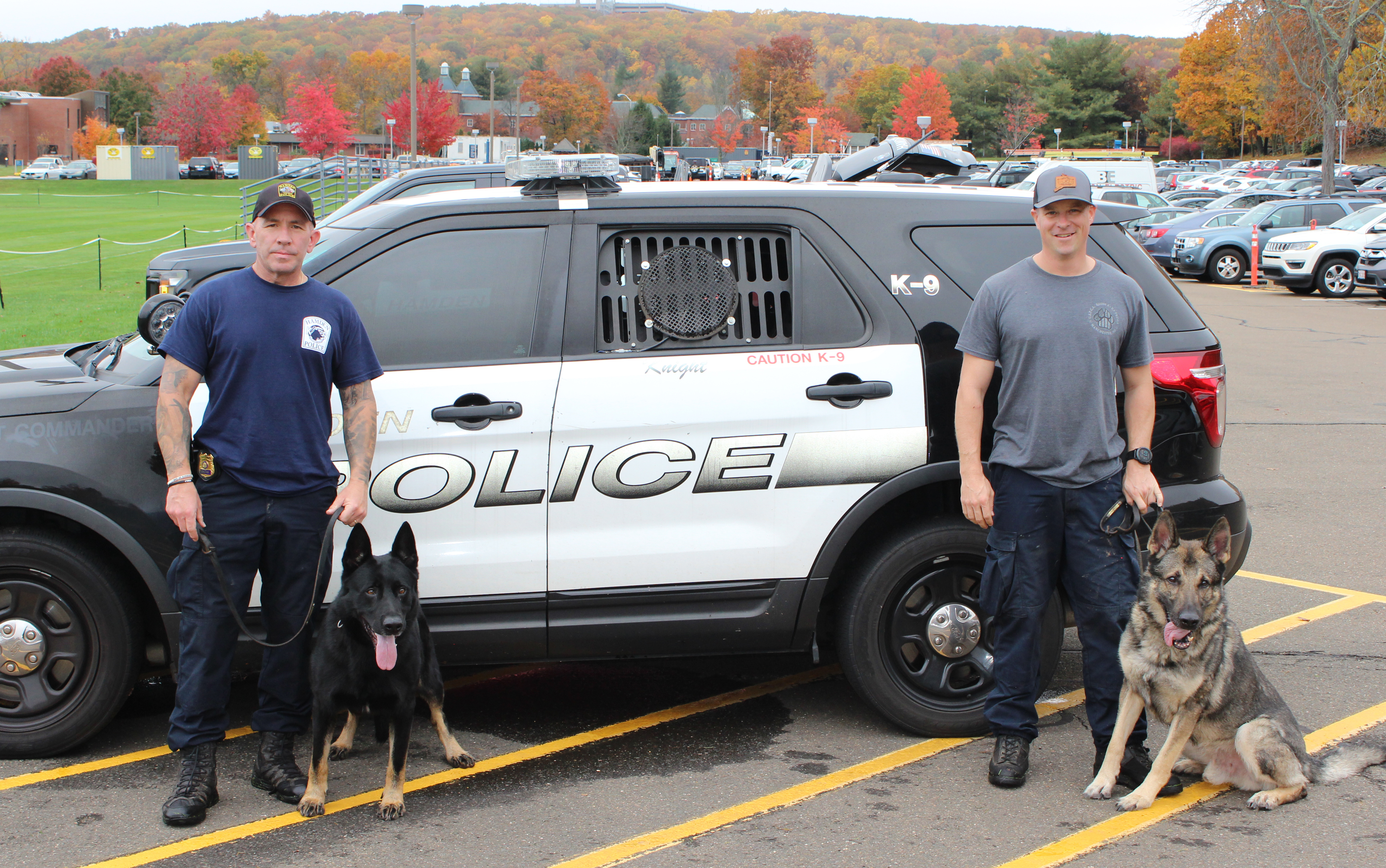
Being a police dog is not an easy task but Venditto said that the dogs love what they’re doing and see it as a game.
For those interested in ever becoming a police handler, Venditto says to show interest.
“If you’re a police officer, work with your K-9 unit,” said Venditto. “Go to K-9 conferences. We have conferences all over the place.”
“You’re a cop first before you’re a K-9 handler. You have to be a good cop. Work on being a good cop first and then show interest in K-9 and then slowly move up,” said Venditto.
As for the public image of police dogs, Venditto explained how vital their value is to the communities that they help protect.
“They protect us just with their mere presence on calls. The deterrent they give, you can’t put a value on that,” he said. “The countless people that they prevent from getting hurt, whether it being the police or the public or anybody, their presence is a very valuable tool.”
The Hamden police dogs put their lives on the line to protect their handlers from danger when they apprehend criminals.
In Venditto’s career, the best part of his job is the friendships he is able to build with his dogs, he said.
“I think it’s just having that partner with you, that buddy in the car with you,” said Venditto. “You’re always going to work with somebody. You go to work together, you come home together and it’s just that camaraderie.”

